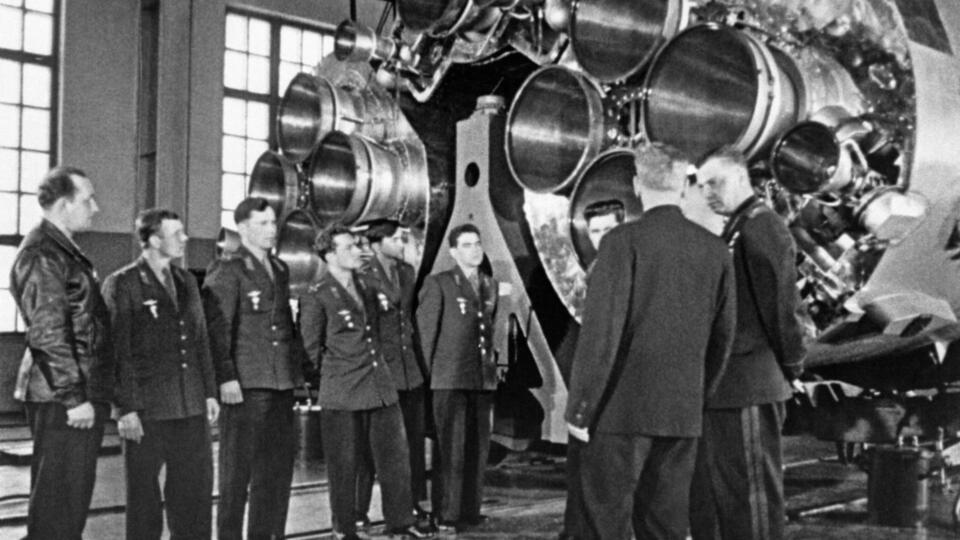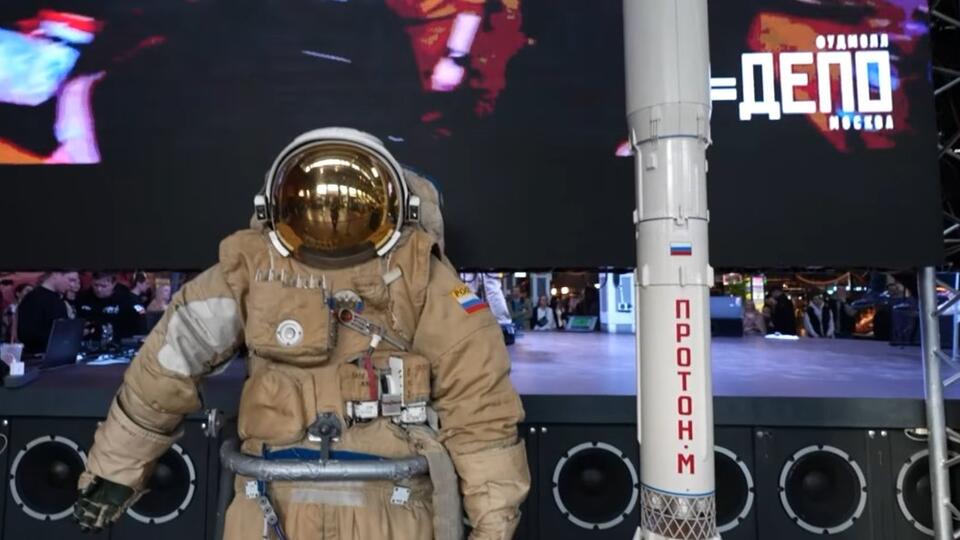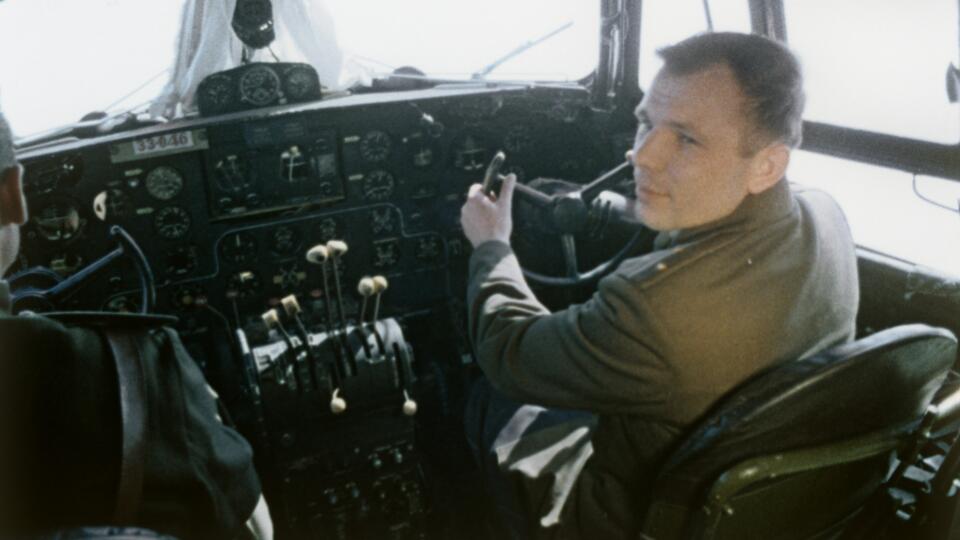Photo: © Model of the spacecraft “Vostok”. RIA Novosti/Kirill Kallinikov

Photo: © Model of the spacecraft “Vostok”. RIA Novosti/Kirill Kallinikov
On April 12, Russia and other countries of the former USSR celebrate Cosmonautics Day. The rest of the world knows this holiday as International Day of Human Space Flight. In the spring of 1961, Yuri Gagarin circled the Earth on the Vostok-1 spacecraft, opening the way for mankind to the boundless space of the Universe. This event changed world history and cemented the leadership of the Soviet Union in the space race. Details – in the material REN TV.
When is Cosmonautics Day celebrated?
Cosmonautics Day is celebrated on April 12, the anniversary of the first manned flight into space. The holiday was established in April 1962 – a year after the landing of Yuri Gagarin.
Cosmonautics Day received international status in 1968 at a conference of the International Aviation Federation. And in March 1995, Russia adopted a federal law that fixed Cosmonautics Day as a memorable date. At the same time, April 12 is not an official holiday in the country.
Space race of the USSR and the USA
The exploration of outer space has always excited the minds of scientists and testers. Back in the 1880s, Konstantin Tsiolkovsky put forward the theory of a multi-stage liquid-fueled rocket. Decades later, the dream of space exploration received a scientific basis and the necessary technical support. And the Cold War, which began immediately after the Second World War, gave this dream the character of a space race between the USSR and the USA.
It began after the launch by the Soviet Union of the first artificial Earth satellite on October 4, 1957. Four months later, the achievement was repeated in the States. Next came the turn of the animals. On November 3, 1957, our Sputnik-2 with the dog Laika became the first manned spacecraft in orbit. But the dogs Belka and Strelka, who made an orbital flight on Sputnik-5 from August 19 to 20, 1960, are considered the most famous animals in space. The Americans responded by sending Ham the chimpanzee into orbit.

Creation of the ship “Vostok-1”
The development of the Vostok manned complex began in May 1959 on the initiative of Dmitry Ustinov, Deputy Chairman of the Council of Ministers of the USSR. Due to the desire to get into space before the United States, the creators made a number of suboptimal, but quickly feasible decisions. So, Vostok-1 lost its emergency rescue systems at the start and soft landing systems. The redundant brake installation disappeared – it was replaced by a 10-day life support system. It was during this time that the ship would have descended from low orbit even if the main brake failed. The flight was supposed to take place in automatic mode, however, if necessary, the astronaut could take control.
Selection and training of the first cosmonaut
Applicants for flight into space were selected from pilots of jet fighter aircraft. Yuri Gagarin approached inclusion in the cosmonaut corps as a senior lieutenant, and his credit included 265 hours in the air. The candidate must meet a number of requirements:
- age – 25–30 years;
- height – no more than 170 cm;
- weight – up to 70–72 kg;
- perfect health;
- endurance;
- discipline;
- altitude and stratospheric adaptation;
- fast reaction;
- mental balance.
Also, the selection took into account positive characteristics, membership in the CPSU, political activity and social origin. Of the 20 applicants, six people made it to the final list. Yuri Gagarin and German Titov quickly became leaders. On April 8, 1961, at a closed meeting of the State Commission for the launch of the Vostok spacecraft, the commander of the detachment Gagarin was approved as the first cosmonaut, and Titov as a spare.

First flight to space
Purpose of the flight
The purpose of the flight was formulated by the State Commission for the launch of the Vostok spacecraft. On April 12, 1961, it was planned to test the possibility of a person staying in space on a special ship, to check equipment and communications with the Earth, and to make sure that the means of landing were reliable.
How was the first space flight
His famous “Let’s go!” Gagarin spoke at 09:07 Moscow time. A few minutes later, Vostok-1 went into orbit. During the flight, the cosmonaut reported to Earth about his state of health, the state of the spacecraft, and his observations. He had a tape recorder at his disposal to record his voice on tape. The idea of fixing on paper disappeared immediately, as the pencil detached from the mount and “floated” in weightlessness. Gagarin analyzed the situation, examined the planet and the stars, and drank and ate to test life in space.
The ship made a revolution around the Earth, and at 10:25 the braking system was turned on. The landing was successful, but with contingencies. Automation did not immediately allow the separation of the compartments, and before entering the atmosphere, Vostok-1 tumbled randomly. During the descent, Gagarin withstood multiple overloads, and after the ejection he almost suffocated – the spacesuit temporarily did not receive air.

The legendary flight ended at 10:53. Gagarin landed not 110 kilometers from Stalingrad, as planned, but near the village of Smelovka, Saratov Region. Before the arrival of the military, the cosmonaut managed to communicate with the locals to his heart’s content.
Holiday traditions in Russia
In Russia, Gagarin’s flight remains a national treasure and the pride of the achievements of Russian science. On April 12, cosmonauts, engineers, designers, test pilots, graduates and teachers of specialized universities gather for scientific conferences and seminars, discuss the latest achievements in the space industry and future plans for the exploration of the expanses of the Universe.
On Cosmonautics Day, many Russian cities launch home-made models of rockets made by students of rocket modeling clubs, and exhibitions are held in museums.
On the occasion of the holiday, thematic lessons and class hours dedicated to the life of Yuri Gagarin are held in schools. Even kindergartens talk about space and the achievements of Russian cosmonauts.
Holiday traditions in other countries
In other countries of the world, April 12 is celebrated as the International Day of Human Space Flight, established by the UN. One of the most popular promotions is St. George’s Night. It was first organized in 2001 in Los Angeles to promote space exploration and new technologies. According to the organizers, this is a worldwide space party with live music, food and interactive exhibits.

And on the holiday, children launch model rockets, visit planetariums and try on spacesuits – as an image of a person who once conquered orbit for posterity.
Little known facts about Yuri Gagarin
Yuri Gagarin was born on March 9, 1934 into a large family in the village of Klushino, Gzhatsky district, Western region of the RSFSR. Not everyone knows what path he went before flying into space:
- in October 1941, the German invaders drove the Gagarins out of the house, which they looked after as a workshop, and the family took refuge in a makeshift dugout;
- the Nazis beat the father of the family to work, and the older brother Valentine and sister Zoya were driven to Germany;
- in 1949, Gagarin entered the Lyubertsy vocational school, where he participated in amateur performances, playing the trumpet;
- in a military school, assistant platoon commander Gagarin was beaten by his subordinates for strictness, but even after the hospital, Yuri did not lower his requirements;
- Gagarin was almost expelled due to his short stature: when the plane landed, the pilot did not see the strip well, but the pillow on the chair fixed everything;
- while waiting for the flight in the cockpit of Vostok-1, the cosmonaut listened to the songs of Bulat Okudzhava;
- from space, Senior Lieutenant Gagarin returned as a major, which was taken care of by Nikita Khrushchev;
- Since 1968, the city of Gzhatsk has been called Gagarin.

How to become an astronaut
You can get into the cosmonaut corps by going through a tough selection in several stages. At the start of the open enrollment of Roskosmos, you must submit an application – anyone can send it. After that, the first screening takes place, as a result of which about a quarter of the applicants do not pass.
The next stage includes a physical fitness test: endurance, strength, speed, agility exercises, as well as various interviews – ranging from essays to engineering skills tests.
Those who have passed the full-time tour will have a two-year course of general space training (GSP), according to the results of which it will be necessary to pass exams and obtain qualifications. Only after that there is a chance to get into the crew of the ship or into the spare.
Source: Ren
Alfred Hart is an accomplished journalist known for his expert analysis and commentary on global affairs. He currently works as a writer at 24 news breaker, where he provides readers with in-depth coverage of the most pressing issues affecting the world today. With a keen insight and a deep understanding of international politics and economics, Alfred’s writing is a must-read for anyone seeking a deeper understanding of the world we live in.
